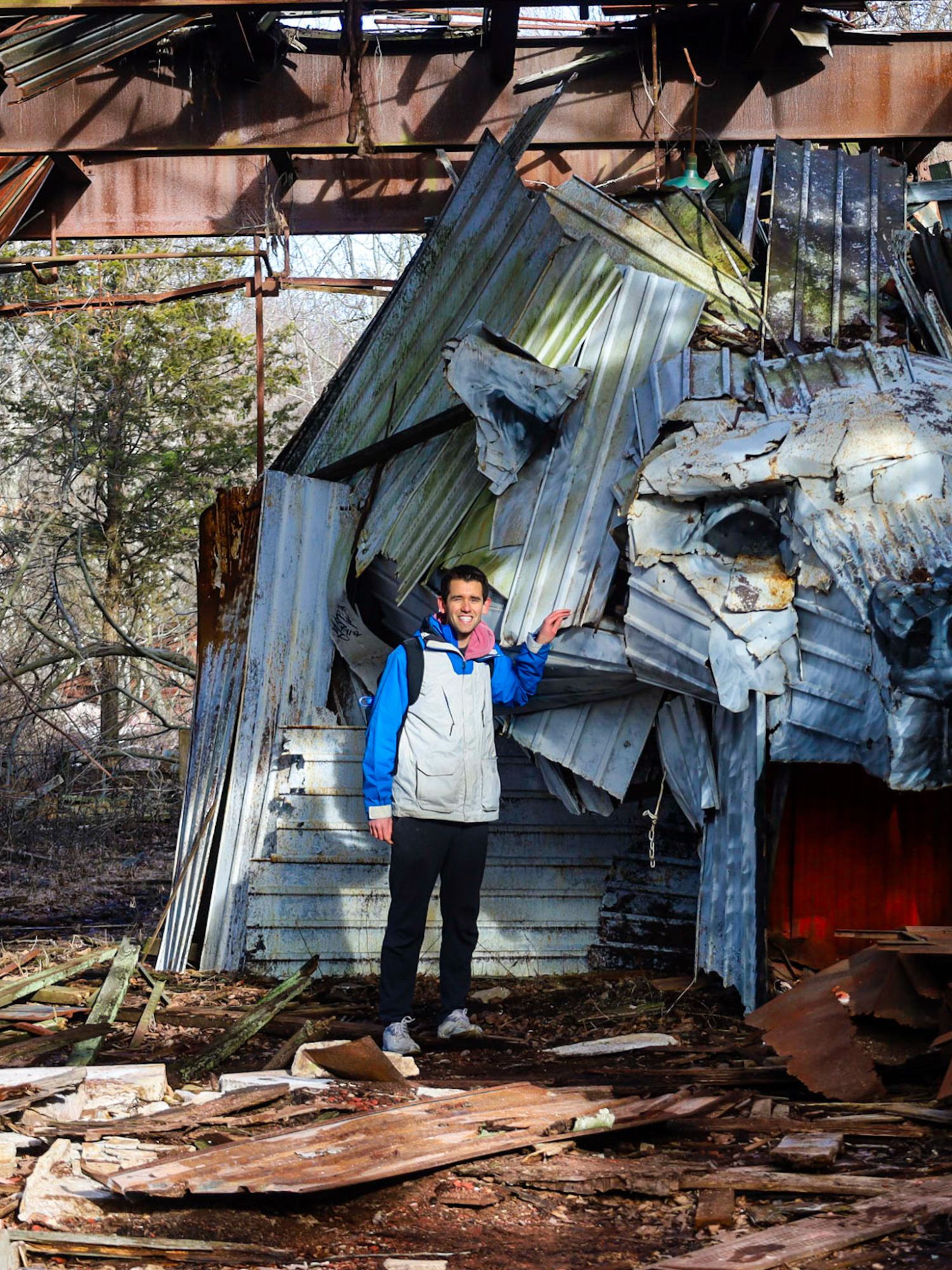About This Location
Nestled in Farmington, Connecticut, lies the captivating and long-abandoned Shade Swamp Sanctuary. This remarkable animal sanctuary, which dates back to the 1920s, is a relic of the depression era and offers a glimpse into a bygone era. It has remained untouched since the 1960s, and today, the sanctuary and its surrounding land are open to the public, inviting adventurers to explore the decaying remnants of a once-thriving refuge.
The journey into this intriguing sanctuary begins at the Shade Swamp Nature Trail Trailhead, conveniently located along bustling U.S. Route 6 in Farmington, Connecticut. While many pass by this unassuming parking area and trailhead each day, I was fortunate to be the sole explorer at this moment. It's a discreet entrance, and most people might overlook the hidden treasures it holds.
One of the first remnants of the sanctuary is visible right next to the trailhead, where the Shade Swamp Shelter once stood. Sadly, the shelter collapsed a year or two ago, in 2021 or 2022. This historic structure, built in 1934 by a crew of the Civilian Conservation Corps, was a registered historic site. While I could see some of the bricks from the shelter's foundations, nothing else remained.
Undeterred, I continued along the trail. Although there was no trail map at the trailhead, it was evident that this would be a short walk. The trail appeared well-maintained, with no fallen trees obstructing the path and few rocks or branches. Its ease suggests that it might be a popular trail among locals.
After only a few moments on the trail, I reached the fence that once encircled the Shade Swamp Sanctuary, with one of the old shelters visible in the distance. The sight of this rusty old fence amidst the woods was fascinating. It appeared to have been a substantial fence, much of which remains intact to this day. An opening was created in the fence to allow visitors to enter the sanctuary, but large portions of the fence still surround the area.
Ducking under the fence, I ventured towards the first structure I encountered. Before delving into the sanctuary's history, it's essential to understand why these old shelters, cages, and fences still stand as silent witnesses to the past.
The Shade Swamp Sanctuary's origins trace back to the 1920s when the government acquired Shade Swamp to establish a wildlife management area. This initiative was prompted by the generous donation of 140 acres of land around the swamp by Walter W. Holmes, a local nature enthusiast, in 1926. Subsequently, the state acquired the entire swamp and hundreds of surrounding acres, amassing a total of 800 acres. Construction of the sanctuary took place during the 1930s and 1940s, primarily orchestrated by the Civilian Conservation Corps (CCC) and the Works Progress Administration (WPA). These two organizations, established by President Franklin D. Roosevelt during the Great Depression, aimed to employ millions of jobseekers. The CCC erected the Shade Swamp Shelter, which regrettably collapsed recently. The WPA constructed cages and "natural" dens to house native animals.
In 1934, the Connecticut Department of Fish and Game established the Shade Swamp Sanctuary as a wildlife management area. It served as a hospital for injured birds and quadrupeds, nursing them back to health before releasing them into the wild. To provide shelter, the sanctuary featured small steel cages and enclosures, some of which included stonework dens.
Aside from offering medical care to injured animals, the sanctuary engaged in raccoon breeding for hunters and cottontail rabbit multiplication operations. It also provided a home for a variety of unique and endangered local animals throughout the year.
The sanctuary's open-door policy extended to animals in need, attracting animal owners from all walks of life. Consequently, it became known as "The Little Zoo" and the "Farmington Zoo." These monikers became common as many individuals during that era aspired to introduce various animals into the region. Animals were transported to Connecticut for zoos and personal use, but when injured or no longer desired, they often found a haven at the Shade Swamp Sanctuary. Over the decades of its operation, the sanctuary housed and cared for an array of intriguing animals, including parrots, wolves, bears, alligators, and monkeys, all seeking care and a new permanent home. One particularly memorable guest was a baby giraffe brought by the owner of a nearby circus that had become stranded.
Ultimately, the state formally abandoned the facility in the 1960s, after the majority of the breeding experiments concluded in the late 1930s. The cages and enclosures, now silent and overrun by nature, stand as a testament to the sanctuary's storied history. If only these structures could speak, they would undoubtedly share an array of captivating tales from a time long past.
Exploring the Shade Swamp Sanctuary allows modern-day adventurers to walk among the ghosts of a unique era, offering a fascinating glimpse into the past and the resilience of the sanctuary's remnants.














